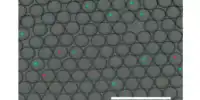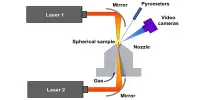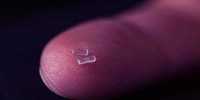An old theory has now found some new evidence as to why water has such unusual properties. Water has some very rare properties. Its hardest part is less dense than its liquid, for example, so icebergs float. It flows more easily when compressed. These properties are beneficial, perhaps even necessary for life. We know that this oddity is a product of localization driven by hydrogen bonds, but we have not been able to create a complete explanation.
Decades ago, scientists suggested that if very cold liquid water had two different forms, it would explain some features that we do not understand. If so, a temperature-pressure graph should be a critical point where these two meet, just as ice has water to convert. However, attempts to explore this point have failed, leaving the theory of different water forms controversial. Now Princeton professor Pablo Debenedetti claims to have found the point of the critical point.
This supercooling is a popular science demonstration and helps shape a high-altitude cloud water-touching climate.
Another peculiarity of water is that it can be cooled well below 0º C (32ºF) without strengthening, provided that there is no defect around which ice crystals can begin to form.
Supercooling in the conditions available to a school science lab means taking water a few degrees below zero. However, under high pressure and very clear conditions, it is possible to go much lower than this and this liquid critical point is also considered to be at a temperature that would deny even a brave penguin. Unfortunately, measuring under these conditions is difficult, so nothing could be confirmed experimentally.
Debenedetti and colleagues in science have reported modeling for cooling water under atmospheric pressure at sea level. The two models agree that a critical point exists somewhere between 170 and 190 Kelvin (-103ºC and -83ºC / -153ºF and -117ºF). One of the authors of the study, Francesco Sciortino, a professor at the University of Sapienza in Rome, proposed something along this line in 1992, but computers were not powerful enough to provide anything beyond unexpected confirmation.
The complexity of the task of modeling the interaction of so many molecules is so great that even today 1.5 years of ‘research computer valuable’ time goes into this research paper. Sciortino said in a statement, “Now I can sleep better because after 25 years my real idea has been confirmed.”
Although this occurs in situations far removed from our daily experience, Debenedetti argues that the existence of a critical point affects the properties of a substance in quite different temperatures and pressures. The paper concludes that when the water has cooled sufficiently, it disperses into the tetrahedral structure of five loosely bound molecules and forms a wild oscillation of density by pressing the sixth molecule inside.
Even the best computer models are not like the real world, and tests will continue to work to confirm these claims. The models differ by about 10 percent of the temperature at which the critical point is, so they provide only a rough guide to where the experimenters are looking.















